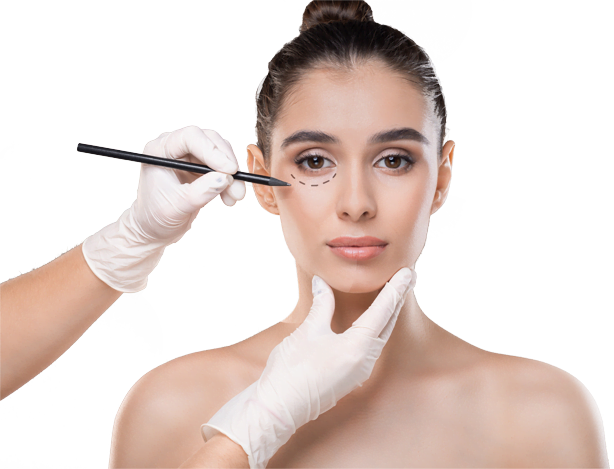In the pursuit of a more youthful and defined facial appearance, many individuals seek cosmetic procedures that can enhance their features. Buccal fat transposition is a surgical technique that has gained popularity for its ability to create a more sculpted and contoured face. This article will explore what buccal fat transposition is, the benefits it offers, the procedure itself, recovery and aftercare, as well as potential risks and complications associated with the surgery. By the end, you’ll have a comprehensive understanding of this cosmetic procedure and what to expect.
Table of Contents
What is Buccal Fat Transposition?
Buccal fat transposition is a surgical procedure designed to reduce fullness in the cheeks and create a more defined facial contour. It involves the removal of excess fat pads located in the buccal region, which are responsible for the “chubby cheeks” appearance. This technique can be an effective solution for individuals who desire a slimmer and more angular face shape.
The Benefits of Buccal Fat Transposition
There are several benefits associated with buccal fat transposition. Firstly, it can provide individuals with a more contoured and defined facial appearance. By removing the excess fat pads in the cheeks, the procedure can create a slimmer and more angular face shape, enhancing the cheekbones and jawline. This can result in a more aesthetically pleasing and youthful look.
Another advantage of buccal fat transposition is its long-lasting results. Once the fat pads are removed, they do not grow back, providing patients with a permanent improvement in their facial contour. This can be particularly beneficial for individuals who have struggled with chubby cheeks for a long time and have not been able to achieve the desired results through diet or exercise alone.
The Procedure of Buccal Fat Transposition
Buccal fat transposition is typically performed as an outpatient procedure under local anesthesia. The surgeon will begin by making a small incision on the inside of the mouth, near the upper molars. Through this incision, they will access the buccal fat pads and carefully remove an appropriate amount of fat to achieve the desired result.
After the fat removal, the incisions are closed with dissolvable sutures. The procedure usually takes around one to two hours to complete, depending on the individual case. It’s important to note that the surgery is tailored to each patient’s specific needs, and the amount of fat removed may vary accordingly.
Recovery and Aftercare
Following buccal fat transposition, it’s normal to experience some swelling and bruising in the treated area. Pain medication and cold compresses can help alleviate any discomfort and reduce swelling. Patients are advised to follow a soft diet for a few days and avoid strenuous physical activity to promote healing.
Most individuals can resume their regular activities within a week, although it’s essential to avoid any activities that could potentially impact the healing process. It’s crucial to follow the post-operative instructions provided by the surgeon to ensure a smooth recovery and optimal results.
Risks and Complications
Like any surgical procedure, buccal fat transposition carries some risks and potential complications. These can include infection, bleeding, adverse reactions to anesthesia, asymmetry, scarring, and nerve damage. However, when performed by a skilled and experienced surgeon, the likelihood of experiencing severe complications is low.
It’s important for individuals considering buccal fat transposition to discuss the potential risks with their surgeon and ensure they have realistic expectations about the outcomes of the surgery.
Results and Expectations
The results of buccal fat transposition can be seen gradually as the swelling subsides, with final results typically visible after a few months. Individuals can expect a slimmer and more contoured facial appearance, with enhanced cheekbones and a more defined jawline.
It’s important to note that the outcome of buccal fat transposition may vary depending on individual factors such as age, skin elasticity, and overall facial structure. Consulting with a qualified plastic surgeon will help determine the suitability of this procedure and manage expectations regarding the results.
Frequently Asked Questions (FAQs)
Q: Is buccal fat transposition suitable for everyone? A: Buccal fat transposition is best suited for individuals who have excess fat in the cheeks and desire a more defined facial contour. A consultation with a qualified plastic surgeon will help determine if this procedure is right for you.
Q: How long do the results of buccal fat transposition last? A: The results of buccal fat transposition are considered permanent. Once the fat pads are removed, they do not grow back. However, it’s important to maintain a healthy lifestyle to ensure long-term satisfaction with the results.
Q: Are there any non-surgical alternatives to buccal fat transposition? A: Non-surgical alternatives, such as injectable fillers, can provide temporary volume reduction in the cheeks. However, the results are not as long-lasting or significant as those achieved through buccal fat transposition.
Q: How long is the recovery period after buccal fat transposition? A: Most individuals can resume their regular activities within a week after buccal fat transposition. However, it’s important to follow the post-operative instructions provided by the surgeon to ensure proper healing.
Q: Can buccal fat transposition be combined with other cosmetic procedures? A: Yes, buccal fat transposition can be combined with other procedures, such as facelift or chin augmentation, to achieve comprehensive facial rejuvenation. Consulting with a qualified plastic surgeon will help determine the best treatment plan for individual needs.
Conclusion
Buccal fat transposition is a cosmetic surgical procedure that can effectively reduce fullness in the cheeks and create a more contoured facial appearance. With its long-lasting results and relatively straightforward recovery, it has become a popular choice for individuals seeking a slimmer and more defined face shape. However, it’s important to consult with a qualified plastic surgeon to discuss individual suitability and expectations. By understanding the procedure, recovery process, and potential risks, individuals can make an informed decision about whether buccal fat transposition is the right choice for them.

